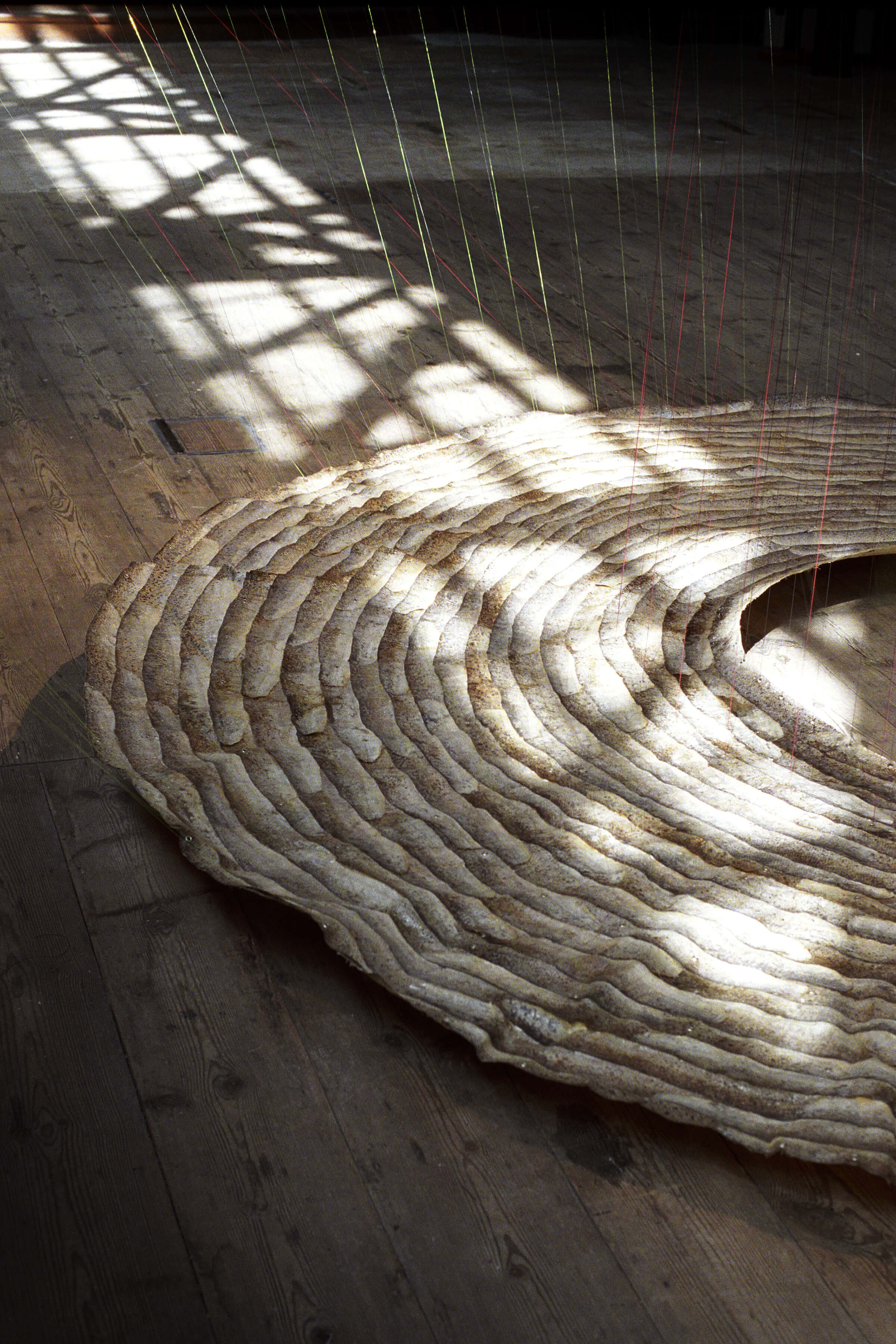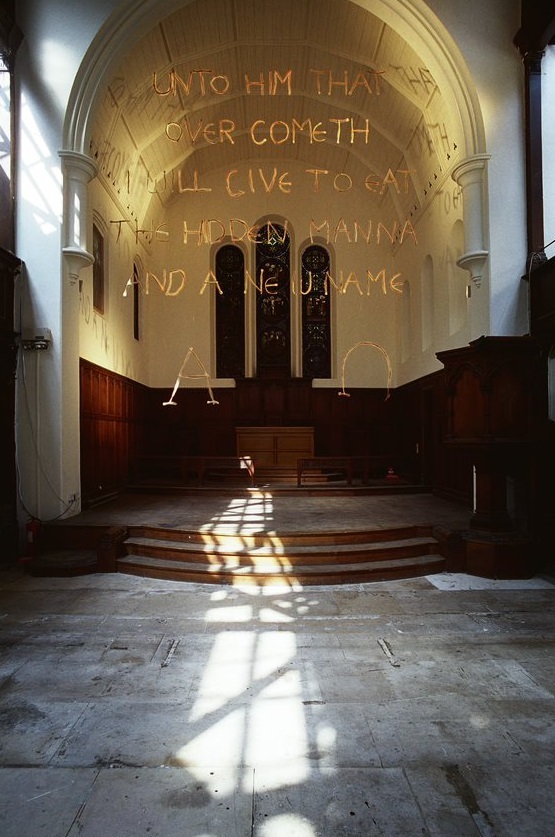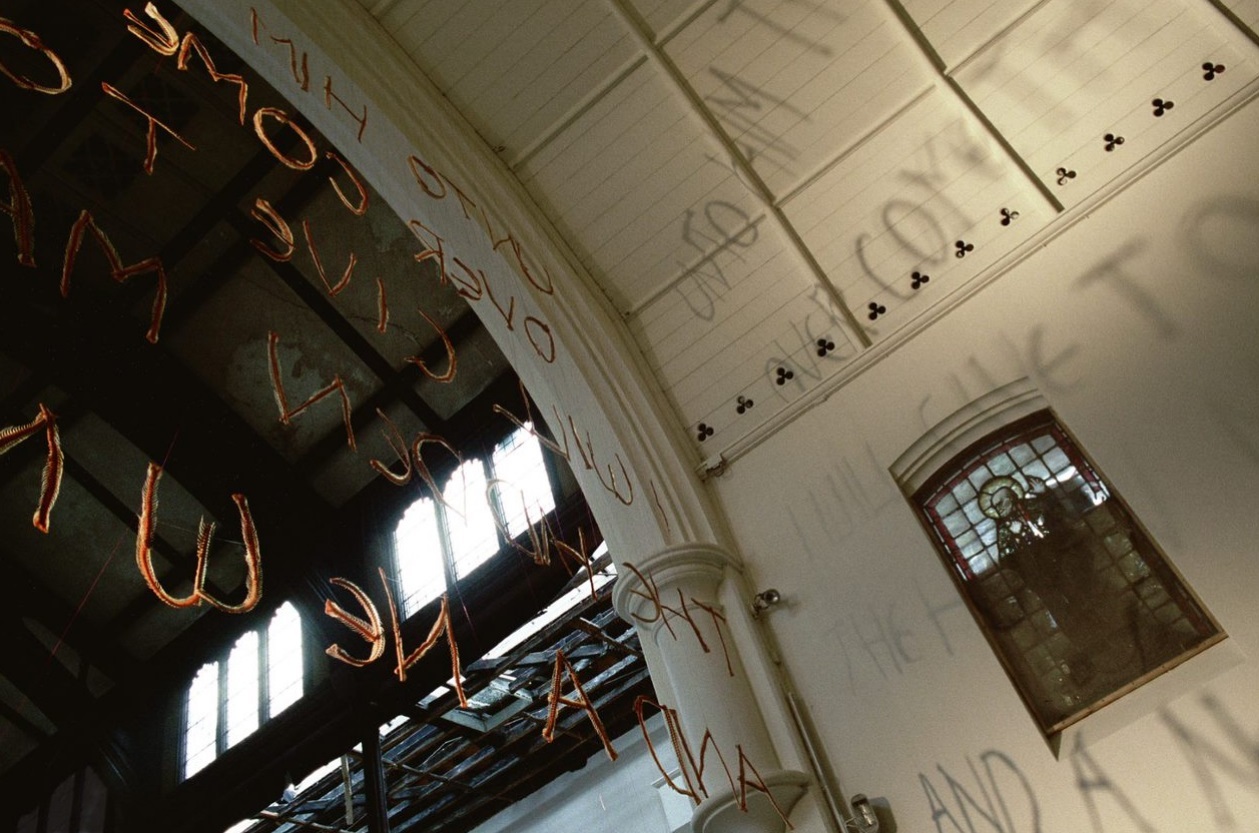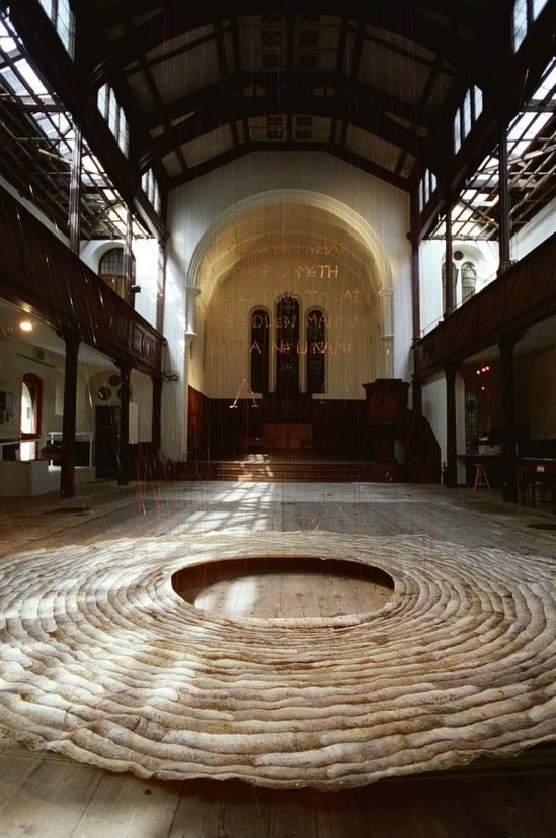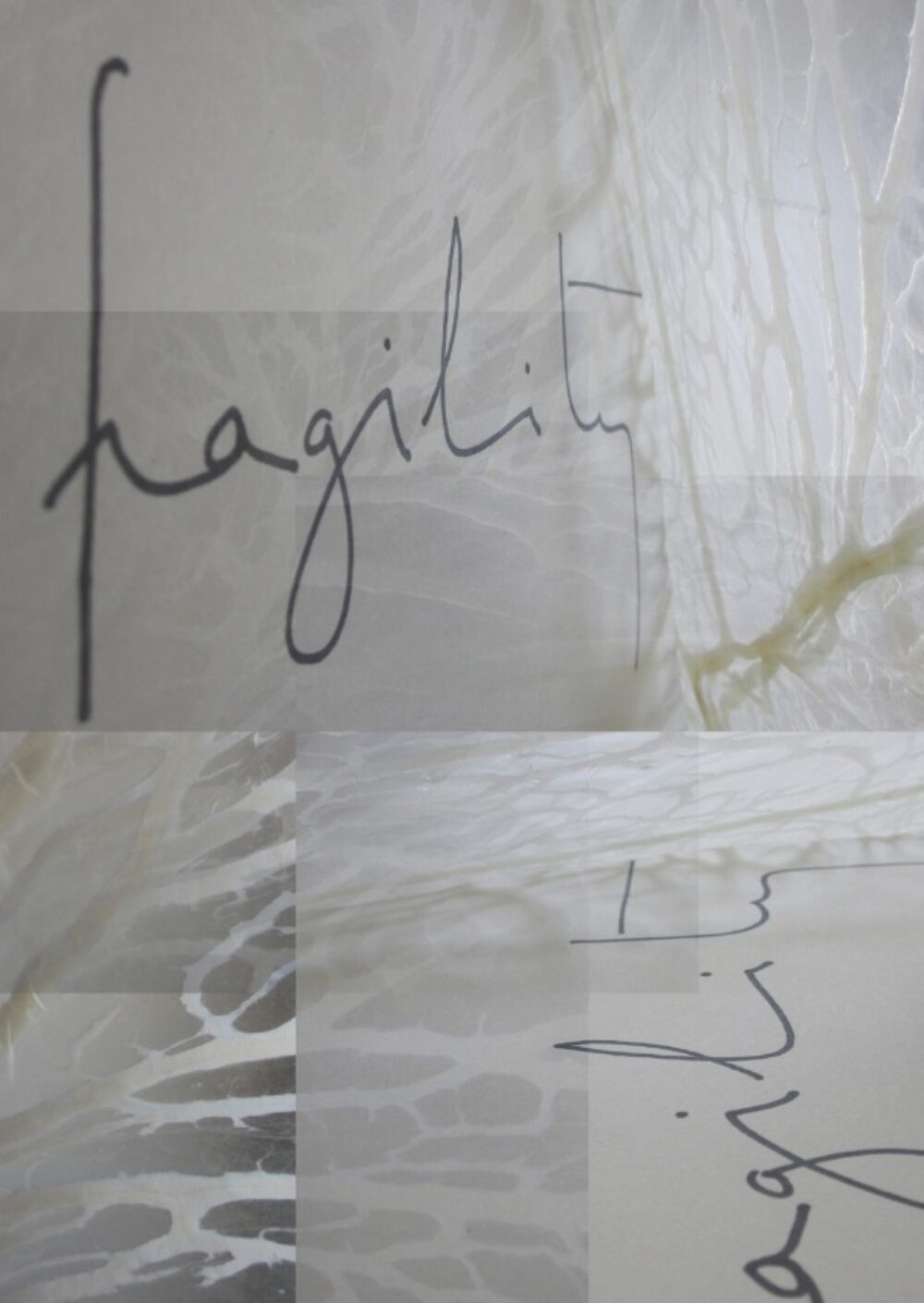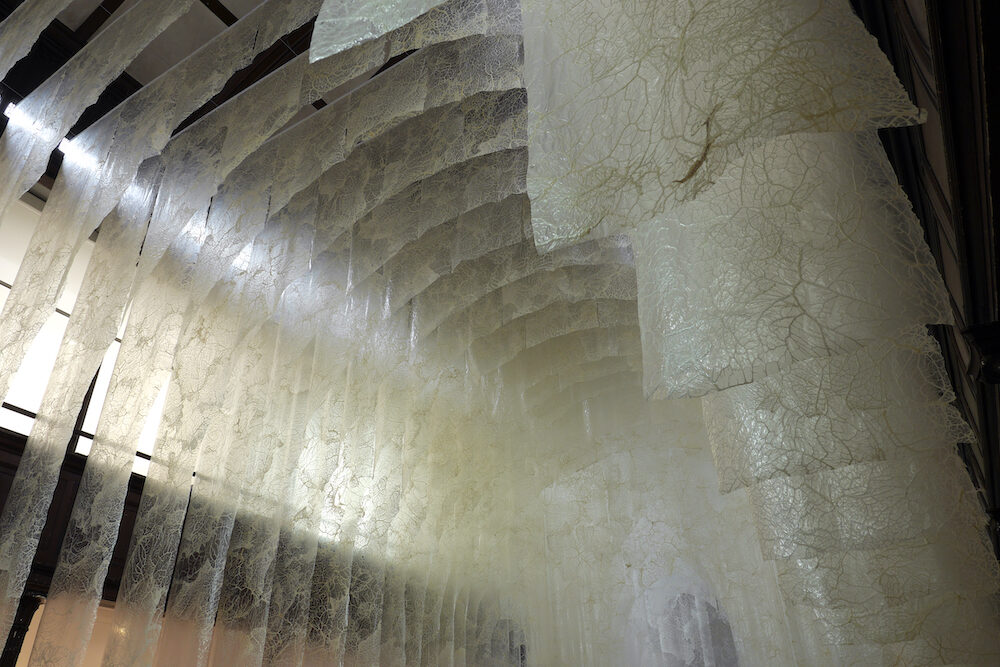Re/sort
Elpida Hadzi-Vasileva
Her work attempts to expose the relationship between human and natural landscapes and the way in which humans interact with nature. The process of making is particularly important to Elpida’s work, as the artist seeks to develop new methods using unconventional materials not relying on established practices and mediums. As with this installation, she painstakingly cleaned, dried and fixed together the fish skins and bones, emulating the labour of fishermen in her art practice. Natural materials are here invested with their symbolic meanings: the fish being a symbol of Christianity, the work becomes a kind of memorial to Fabrica’s past history as a place of Christian worship.
About The Artist
Elpida Hadzi-Vasileva is a contemporary visual artist working across varied media of sculpture, installation, video, sound, photography and architectural interventions.
Her materials range from the extraordinary to the ordinary and the ephemeral or discarded to the highly precious; they have included organic materials, foodstuffs and precious metals, such as caul fat to gold leaf. Central to her practice is a response to the particularities of place; its history, locale, environment and communities.
Elpida has worked in collaboration with many other professionals and organisations including the RSPB, and the Forestry Commission to The Vatican, and from Cathedral settings to National Trust properties as well as contemporary visual arts organisations such as MIMA and Djanogly Gallery, and understand the complexities of place and negotiations necessary to realise work in diverse often fragile settings.
Hadzi-Vasileva is interested in how the exchange of knowledge might develop through collaborative working and in the contexts of landscape, heritage, science and community as offered by each location.
